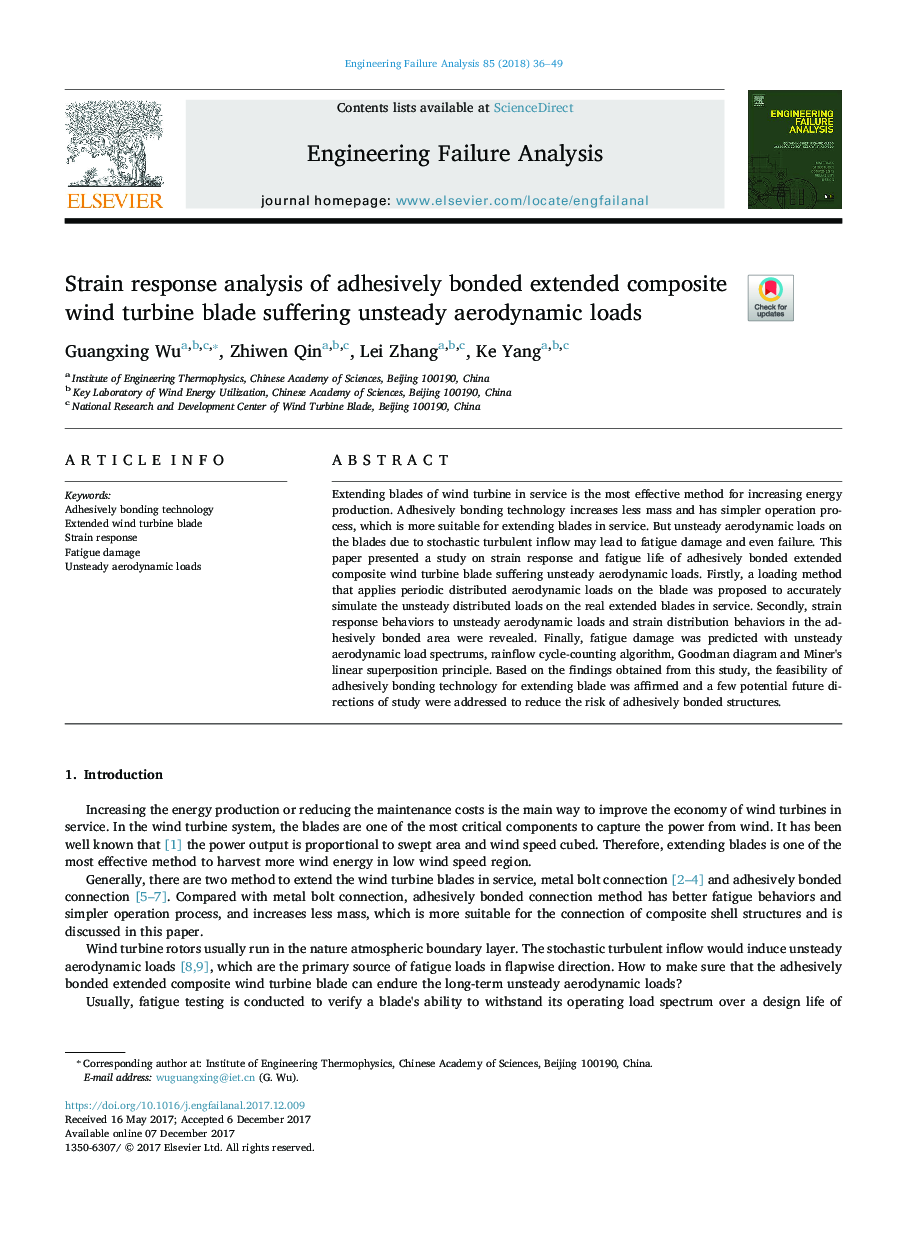| Article ID | Journal | Published Year | Pages | File Type |
|---|---|---|---|---|
| 7167569 | Engineering Failure Analysis | 2018 | 14 Pages |
Abstract
Extending blades of wind turbine in service is the most effective method for increasing energy production. Adhesively bonding technology increases less mass and has simpler operation process, which is more suitable for extending blades in service. But unsteady aerodynamic loads on the blades due to stochastic turbulent inflow may lead to fatigue damage and even failure. This paper presented a study on strain response and fatigue life of adhesively bonded extended composite wind turbine blade suffering unsteady aerodynamic loads. Firstly, a loading method that applies periodic distributed aerodynamic loads on the blade was proposed to accurately simulate the unsteady distributed loads on the real extended blades in service. Secondly, strain response behaviors to unsteady aerodynamic loads and strain distribution behaviors in the adhesively bonded area were revealed. Finally, fatigue damage was predicted with unsteady aerodynamic load spectrums, rainflow cycle-counting algorithm, Goodman diagram and Miner's linear superposition principle. Based on the findings obtained from this study, the feasibility of adhesively bonding technology for extending blade was affirmed and a few potential future directions of study were addressed to reduce the risk of adhesively bonded structures.
Keywords
Related Topics
Physical Sciences and Engineering
Engineering
Industrial and Manufacturing Engineering
Authors
Guangxing Wu, Zhiwen Qin, Lei Zhang, Ke Yang,
